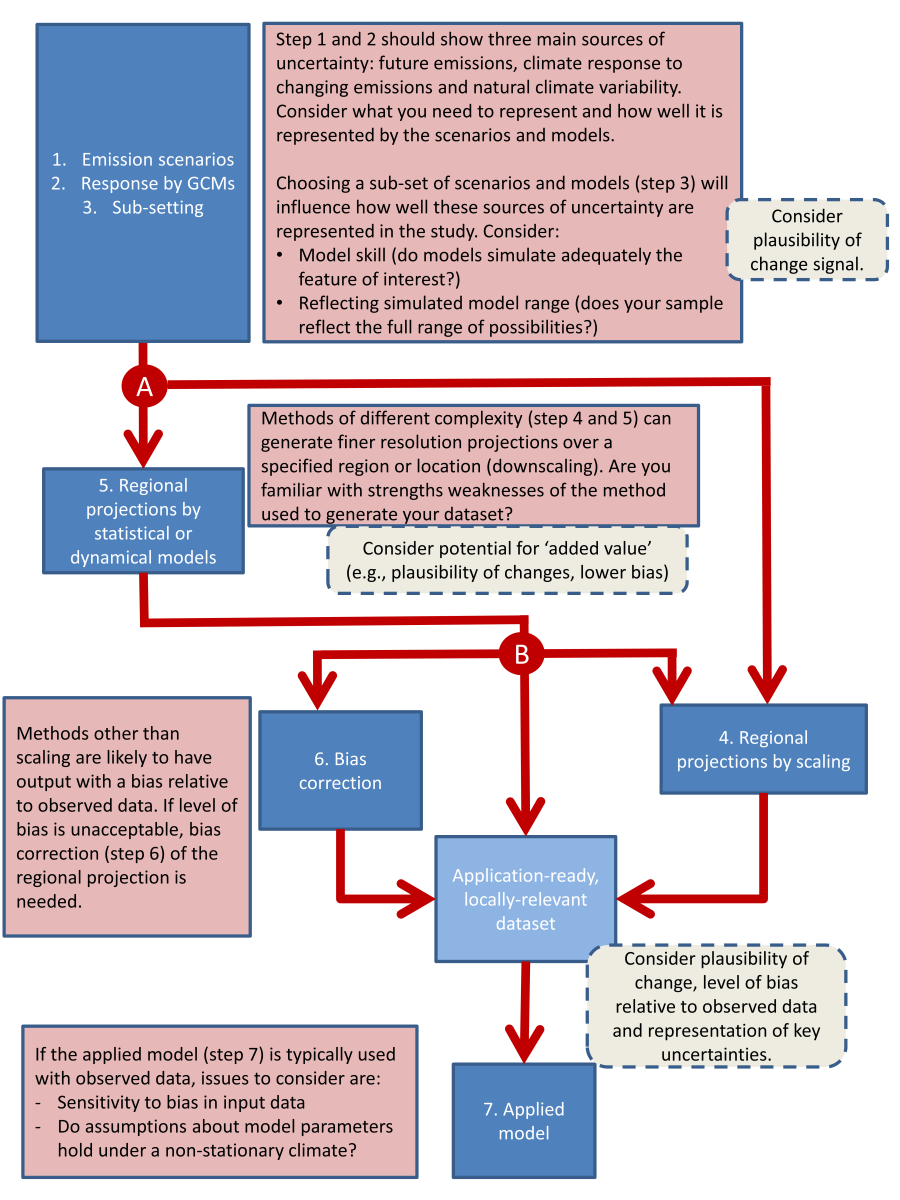Climate Change in Australia
Climate information, projections, tools and data
Regional projections data pathway
Decisions and considerations around using regional climate projections in applied analysis
Information used in impact studies (such as application-ready data ) are often the product of a chain of models and methods, and may include a downscaling step. It is important to be aware of what decisions have been made in developing a particular dataset and how those decisions influence the representation of key uncertainties in projections of changing climate and how to assess the confidence in those projections .
The flowchart below outlines the processes (blue boxes) involved in generating application-ready datasets using the Climate Change in Australia 2015 projections. Red boxes give context to each process and grey dashed boxes outline key issues to consider throughout the process (for example, plausibility of change relates to the capability of models to simulate accurately the climate change signal, see discussion in Ekstrom et al. 2015 ).
Two key decisions marked are:
A. Whether to use technical downscaling (statistical and dynamical models) or whether scaling methods are adequate.
B. If statistical or dynamical downscaling is used, whether the outputs can be used directly, with bias-correction or used as input to scaling.

![]() Download the Pathway as a PDF (428.8 KB)
Download the Pathway as a PDF (428.8 KB)
Further information
- Ekström, M., Grose, M. R., and Whetton, P. H. (2015). An appraisal of downscaling methods used in climate change research. Wiley Interdisciplinary Reviews: Climate Change 6, 301-319. doi: https://doi.org/10.1002/wcc.339
------------
Page updated 24th December 2020



